Outwardly propagation of flames in cylindrical bomb geometry and measures to laminar flame speeds under the constant-pressure combustion is investigated experimentally and theoretically. Interaction of the wall with the flow causing from thermal expansion across the flame modifies the flame propagation speed due to the cylindrical boundary confinement and results in a significant distortion of the flame surface for large flame radius. Additionally, flame fronts structure is changed by intrinsic instabilities resulting from the density discontinues across the flame and stemming from the diffusion imbalance between heat and mass. This paper establishes the reacting flow governing equations with viscous diffusion and heat conduction, and the reaction model to describe energy release characteristics in the process of cylindrical flame for ethylene-oxygen system. A high-resolution parallel code is developed by using 5-th order weighted essentially non-oscillatory WENO scheme to handle advection term and 6-th order central difference scheme to discretize diffusion term. It is employed to simulate the process of cylindrical flame in cylindrical bounding condition. The numerical results show that for the lower initial pressure of unreacted gas cylindrical boundary has a weak effect on the front structure of the laminar flame and flame front still keeps on an circle shape at t=5.3×10-6-1.1×10-4, as shown in Figures 1 and 2. Figure 2 shows that the variation of flame front vs time. Note that laminar flame velocity is almost a constant, and its value is about 1.2m/s (Fig. 2(b)). Figure 3 shows instability of cylindrical laminar flame front at initial pressure P0=1.5atm. It can be seen that at P0=1.5atm, laminar flame front is easy to tend to curves due to non-balance between heat and mass diffusion, as shown in Figure 3 and 4. Moreover, cylindrical bounding has an obvious influence on the flame velocity and the flame goes down rapidly at t>1.1×10-7s, as shown in Figure 4(b).
After flame front is not stable, area of flame surface increases and burning rate enhances, which leads to increase in flame propagating velocity. As the flame accelerates, flame front further curves. Meanwhile, it is worthy to note that at t=1.3×10-4s auto-ignition appears ahead the cellular flame front, as shown in figure 5(a). At t=208×10-4s, developed turbulent flame forms and global sketchy of flame front is not circle, while is close to like cuboid shape (Fig. 5(b)).
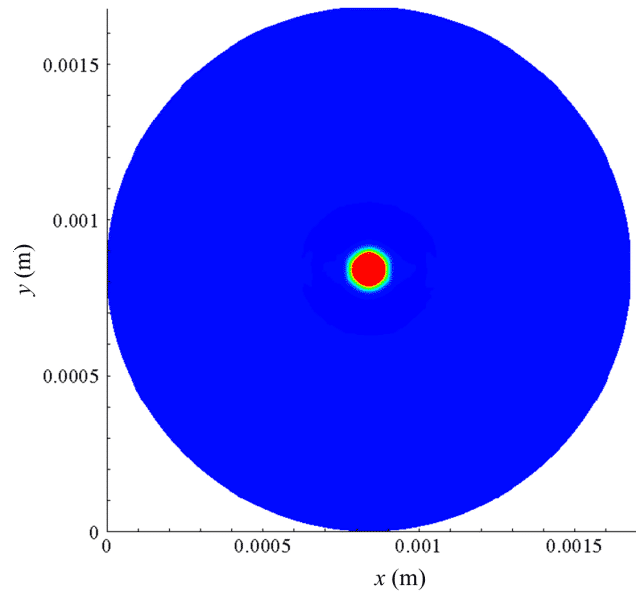
(a)t=5.3×106s

(b)t=2.7×105s
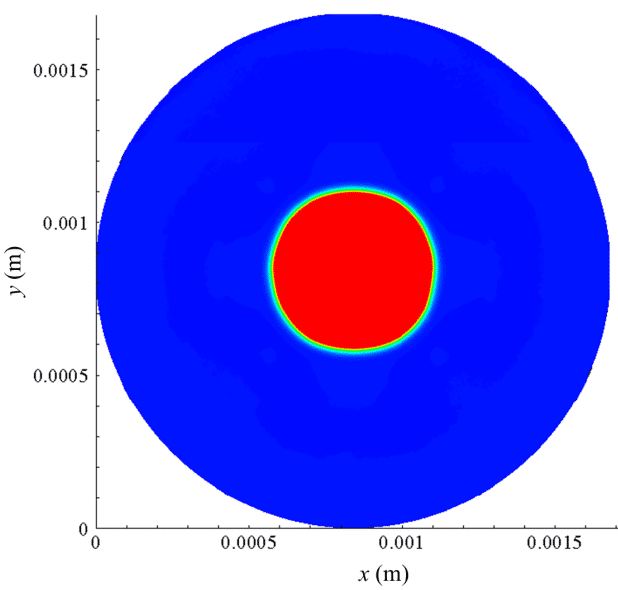
(c)t=7.2×105s
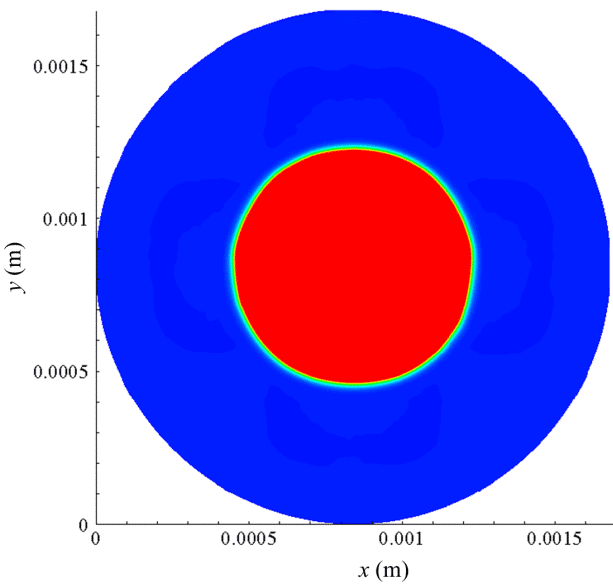
(d)t=1.1×104s
Fig.1 The process of cylindrical laminar flame propagation
(initial pressure P0=0.5atm)
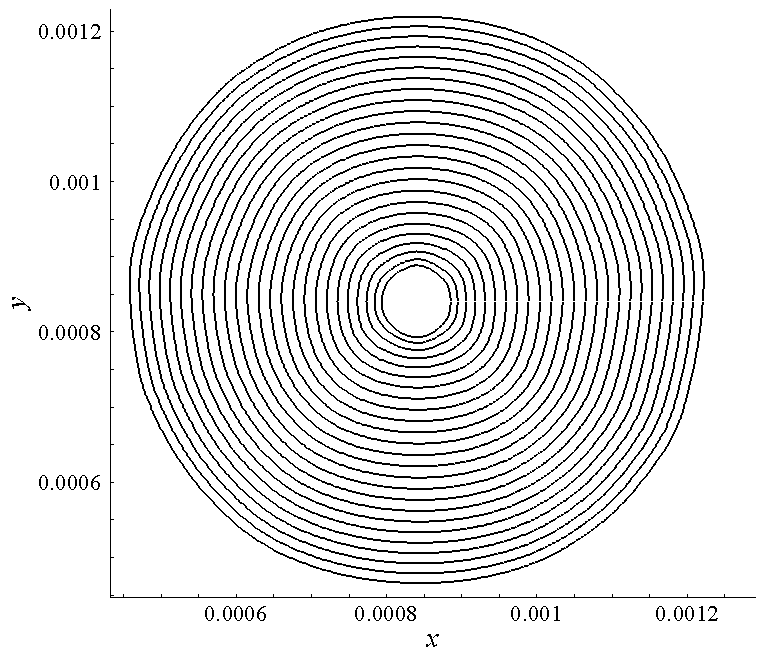
(a)
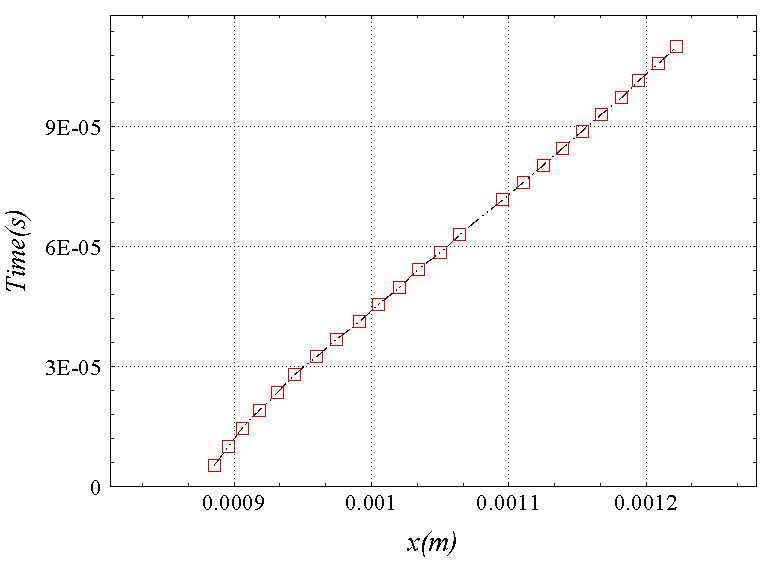
(b)
Fig.2 Evolution of cylindrical flame front and cylindrical
flame velocity (initial pressure P0=0.5atm)
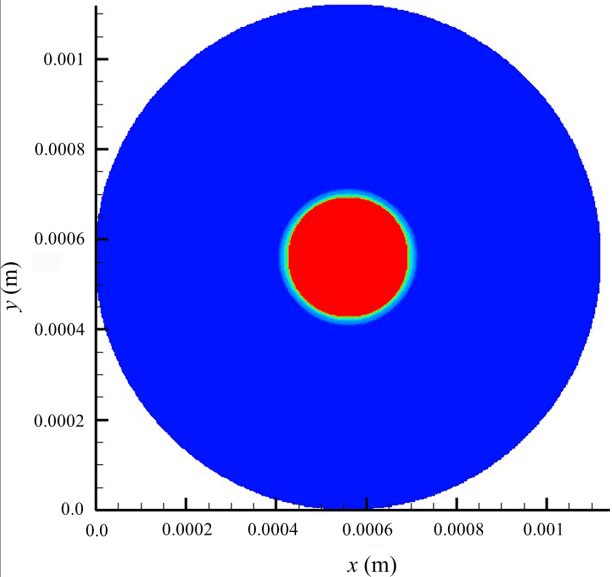
(a)t=1.3×106s
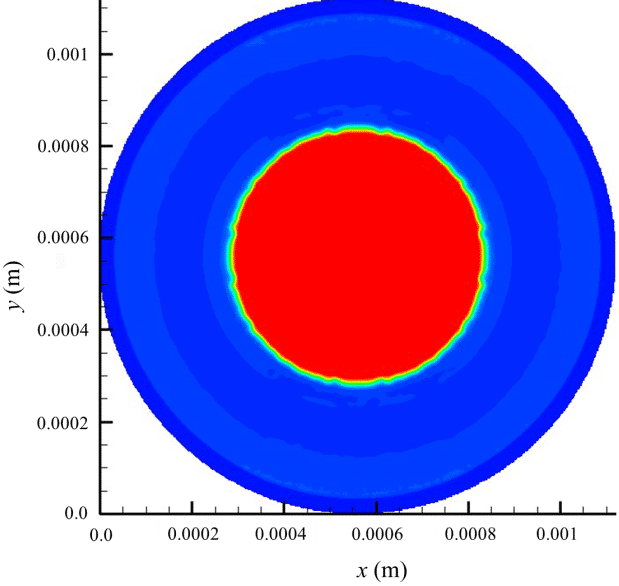
(b)t=2.8×106s
Fig.3 Instability of cylindrical laminar flame front (initial pressure P0=1.5atm)

(a)
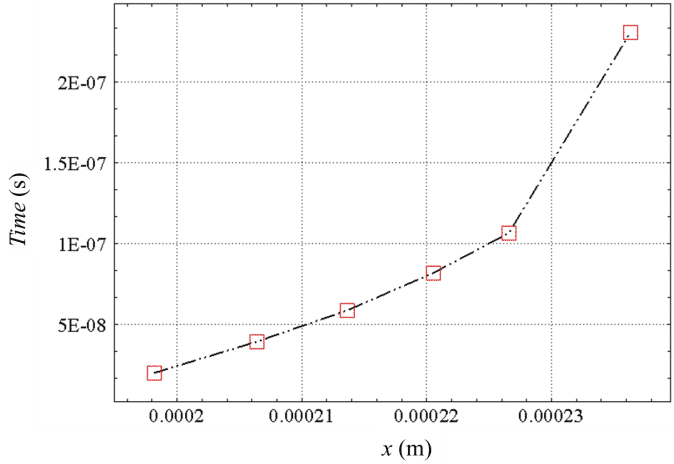
(b)
Fig.4 Evolution of cylindrical flame front and cylindrical flame
velocity (initial pressure P0=1.5atm)
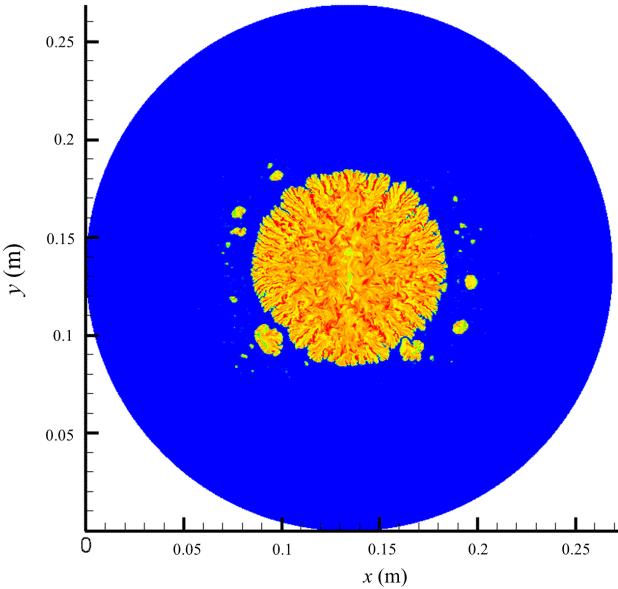
(a)t=1.3×10-4s
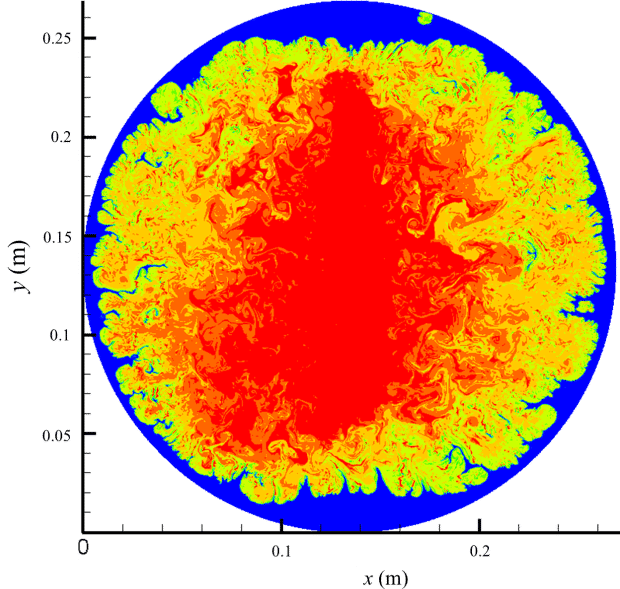
(b)t=2.8×10-4s
Fig.5 Turbulent flame surface in cylindrical confinement (initial pressure P0=1.5atm)

